It was hardly more than a year ago that Sony re-entered the Hi-Fi scene, presenting new devices designed for digital music and branded with the Hi-Res Audio logo. Tested by us, both Sony?s UDA-1 amplifier with DAC and HAP-S1 audio player with hard drive and internet access, were awarded a Qobuzism for their excellent performance.
We will now present you with the benchmark test for the HAP-Z1ES, the ?third member? of the series. The device stands out from the rest, because it acts as a source (it doesn?t have an integrated amplifier) and also because of its excellent design and implementation (ES series, the best of Sony?s audio). All of this at a very reasonable places it at the top of the range for audio devices.
Its dimensions coincide with its high quality traditional elements, like the amplifier TA-A1ES of the same brand. It is clear that Sony thought about the audiophiles and perfectionists here, equipping the HAP-ZIES with symmetrical audio outputs as well as the traditional outputs.
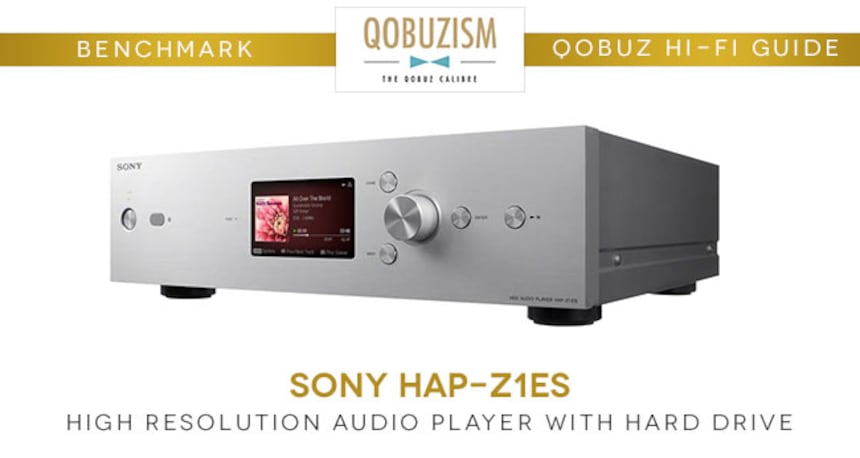
This device is equipped with a wired network connection and Wi-Fi, and so can receive/play radio channels via the Internet. Sony, understanding that it is risky to play files stored on a computer or NAS, equipped the HAP-ZIES with a 1To hard drive, where you can store audio files (it only lacks an SSD buffer during playback, and then even the purest of audiophiles will be in paradise!)
It is possible for every computer and server present on the Ethernet network to transfer their files onto this hard drive, or an external hard drive or USB key for that matter, thanks to the Sony HAP Music Transfer application (there are several images at the end of this test bank of the HAP-S1). The HAP-Z1 even possess its own formatting system of media storage.
About the Sony HAP-Z1 amplifier with hard drive
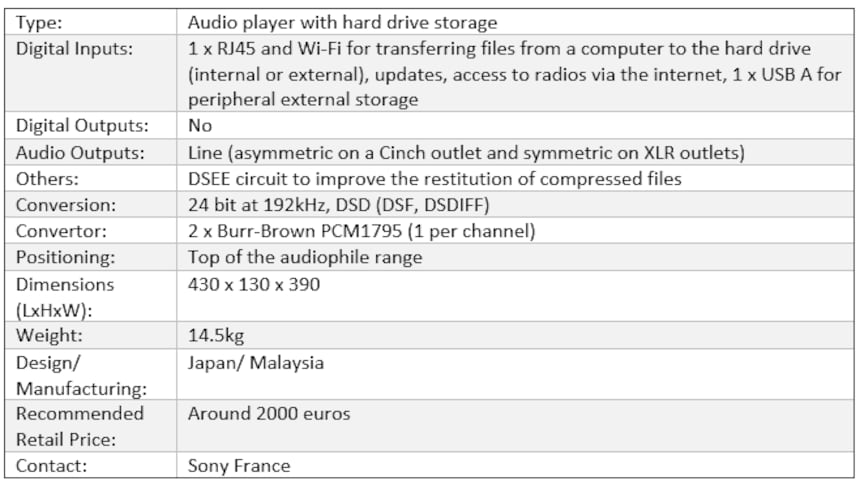
Presentation
With its large natural anodised aluminium frame, the Sony HAP-Z1 audio player looks great and is perfectly in keeping with manufacturer?s other ES devices.
The controls are few in number. On the left is the power button, whilst next it lies the window for the remote control receiver. On the right side there is a scroll wheel, which is surrounded by the Home (welcome) button, the Back button, the Enter button, and the pause button.
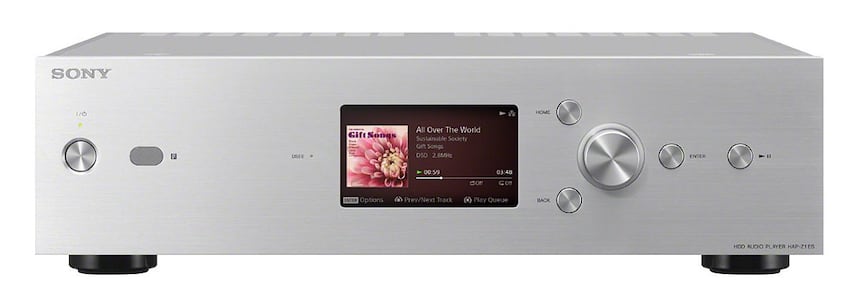
The display, which you can read from up to a meter away (!) is located in the middle of the frame, and a little blue LED light on the left indicates the turning on of the DSEE (Digital Sound Enhancement Engine), which improves the sound reproduction of the 'lossy' compressed files.
Connection
The connectors are on the back face, where there are the necessary audio outputs in the symmetric mode and normal asymmetric outputs. The wired network access with the RJ45 socket is also available in Wi-Fi, and a USB A socket provides the connection to an external hard drive, which should be formatted from the HAP-Z1 menu. An output for the reception of remote control signals is also present on the 3.5mm Jack socket.

Manufacturing
In order to see how the Sony device benefits from the suffix ?ES? one must look in the interior rather than the exterior. The manufacturing of the HAP-Z1ES is particularly meticulous and the components are very carefully chosen. One particularly notices that the power supply processors are very large in dimension, and that the internal organisation is extremely intricate.
The frame is built on multiple elements, using fastening rails for the different cards, and smaller internal frames to receive the processors. All this contributes both to the solidity of the device, and also to the weight, that one only notices when you have to move the HAP-Z1ES!
The sides are aluminium and are fixed to the internal frame, using the same style as many top of the range products, which are often too expensive.
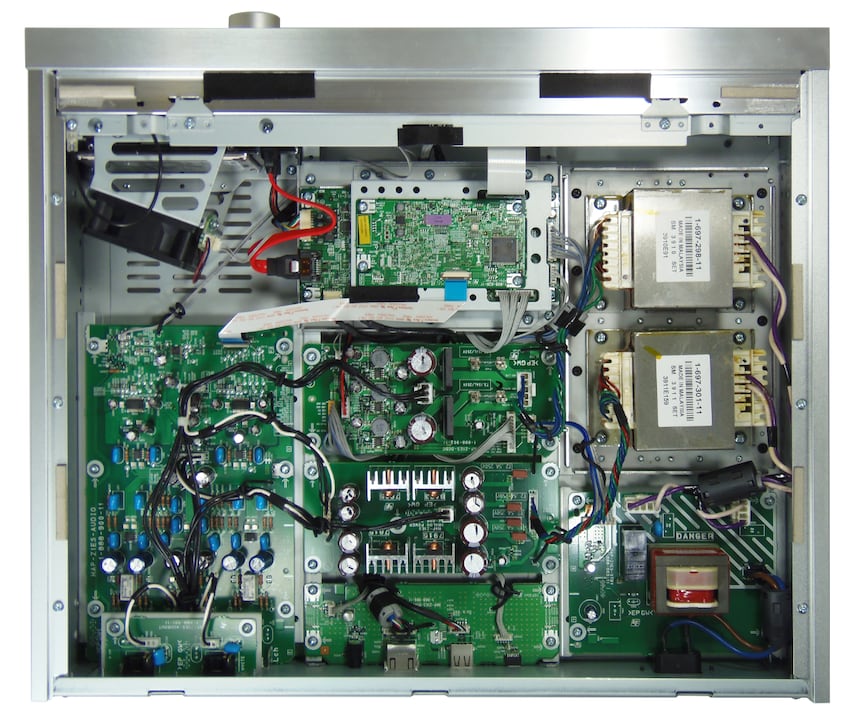
Power supply
Apart from the standby power, installed near the mains connection, the HAP-Z1?s power supplies are situated in the middle of the case; one for the digital circuit, and the other for the conversion and analog section.
The analog power feeds are of a linear type, meaning that they use secondary voltages of the processor, adjusted, filtered and stabilised by the integrated and linear regulators.
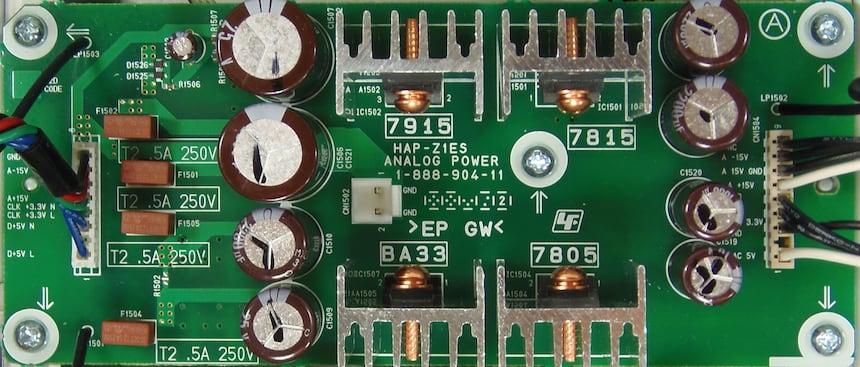
These power feeds are heavily filtered by the electrochemical condensers of a high value (4x2200 ?F/25V) and the voltage regulators (7805 and BA33, voltages of 5V and 3.3V for the digital analog convertors, and 7815 / 7915, tensions of + or ? 15V for the operational amplifiers), which are mounted on the coolers.
These power feeds, that are destined to various digital circuits, are all different (Main 5V, USB 5V and 9V/6V), and are created by switching circuits Richtek RT7256AL. This offers an excellent output, being able to deliver a courant of 3A, which is started from two tensions filtered by the condensers of 2200 ?F/25V.
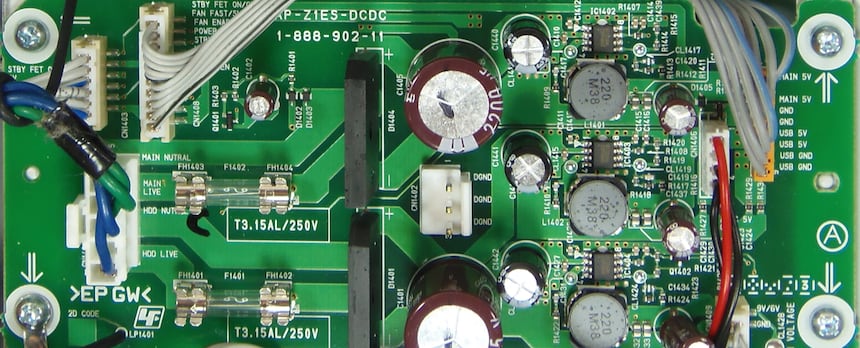
Management, network, hard drive
You can find the electronic management, the control of the hard drive and the network interface all along the front panel. As you can see in the image below, one of the sides of the network card is fully visible.
In this image below one can also see the Analog Devices ADSP21488, the powerful audio digital signal processor.
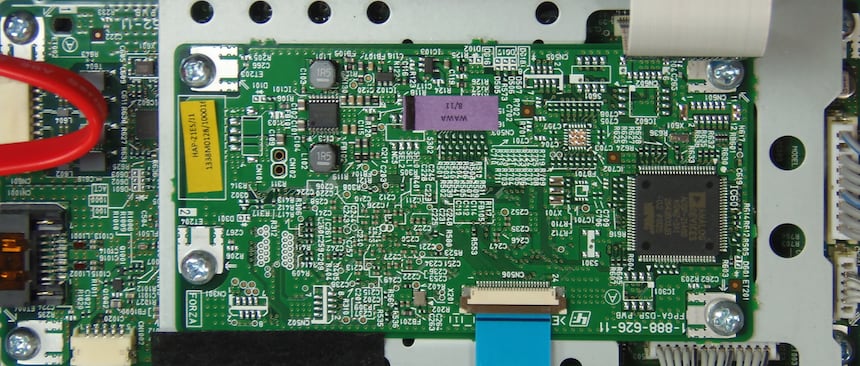
On the other side of this card there lies the Altera Cyclon IV EPG4CGX30, a network of programmable gates.
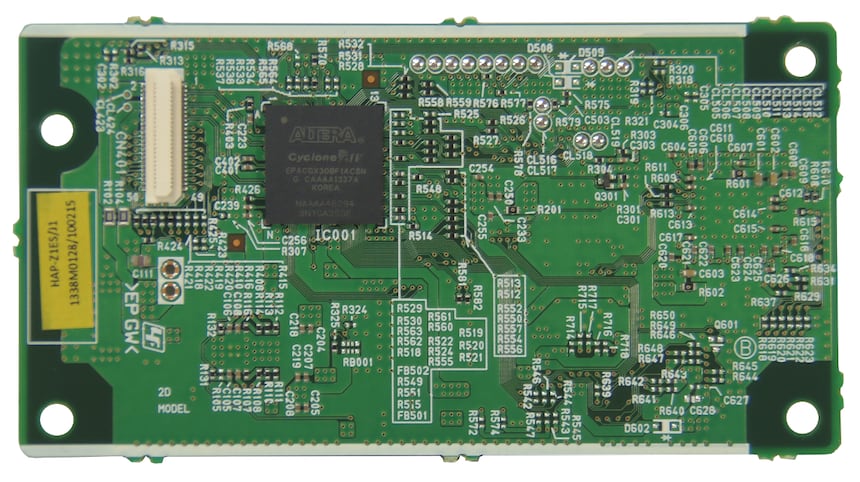
Below you can see the control card, where you have the network map. This ensures the hard drive interface, which contains a ventilator that is used when the temperature requires.
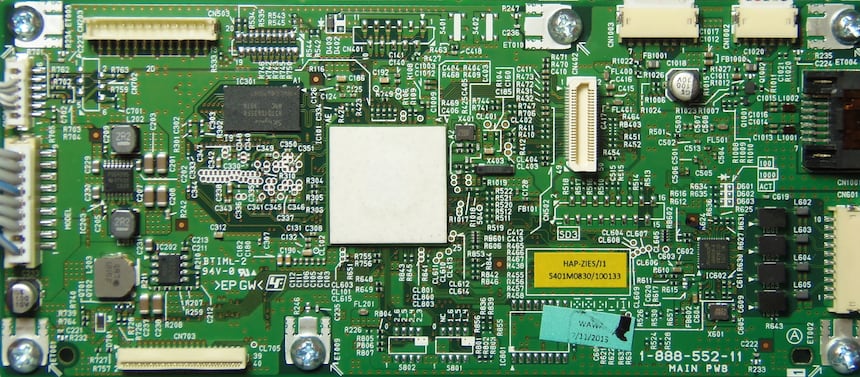
The 1To hard drive, as well as the ventilator, are mounted on rubber mounds independent of each other.
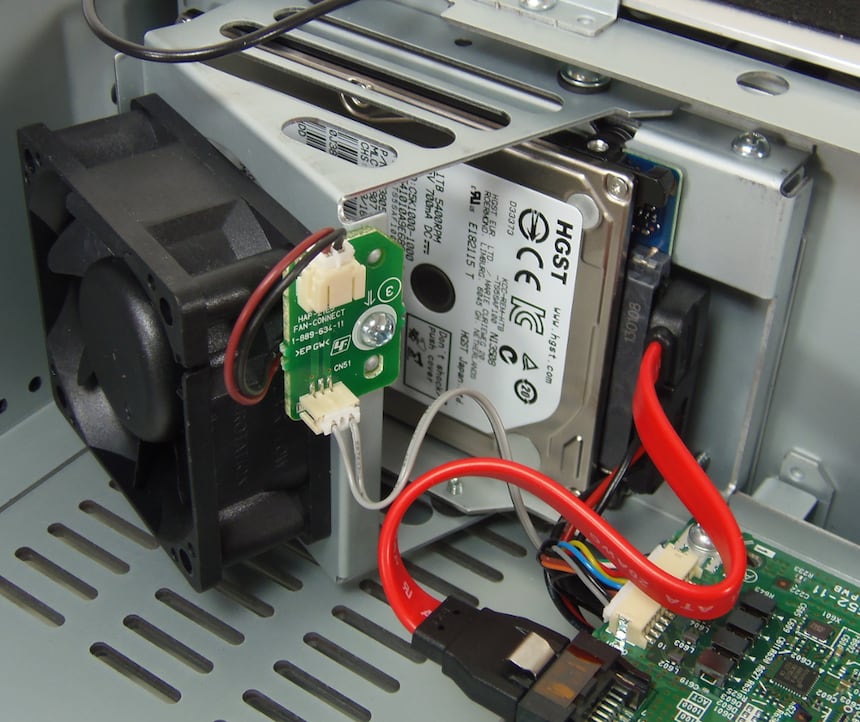
Filtration, conversion
Sony has adopted a double mono design for the digital analog conversion, using two Burr-Brown PCM1795 microchips (32-bit/192kHz), one for the right channel and one for the left channel.
The analog signals exit these chips in a differential form through a courant. These are the double operational amplifiers OPA2132 (also of Burr-Brown origin). They are low noise and low distortion with a high scanning speed (slew rate), which are responsible for the voltage current conversion.
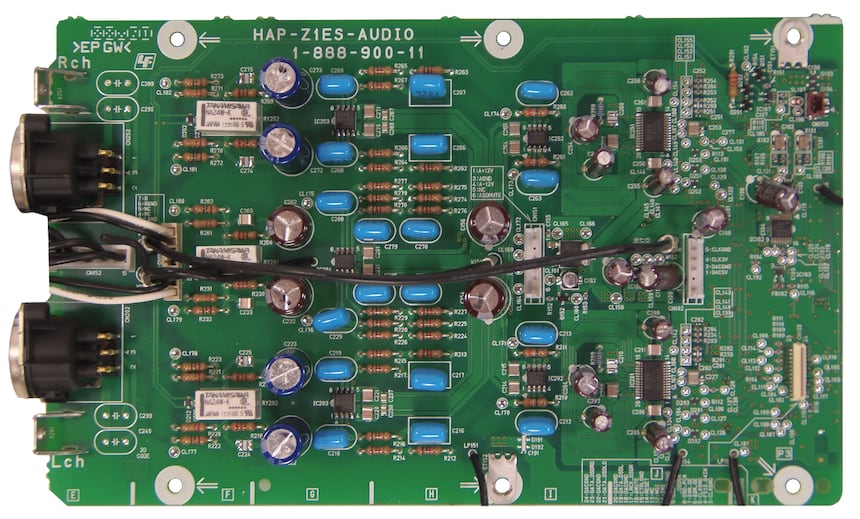
An OPA2132 is also used to filter the audio analogical signals, along with the plastic layered resistor condensers, whereas the balancing of these signals is ensured by the operational amplifiers NJM2114, manufactured by JRC (New Japan Radio Company). Their performances are slightly superior to the classic (and still used) NE5532.
The signals are then transferred across the connection of the brand Takamisawa, towards the connectors of the Cinch output, for the asymmetric mode and XLR for the symmetric mode.
Usage, Listening Although you can use the buttons on the actual device in a satisfactory manner, to navigate the remote control for pausing and switching tracks, it is unsurprisingly much more pleasant and flexible to use the Sony HDD Audio Remote application from the comfort of your sofa!
- The welcome screen of the Audio Remote Sony HDD application
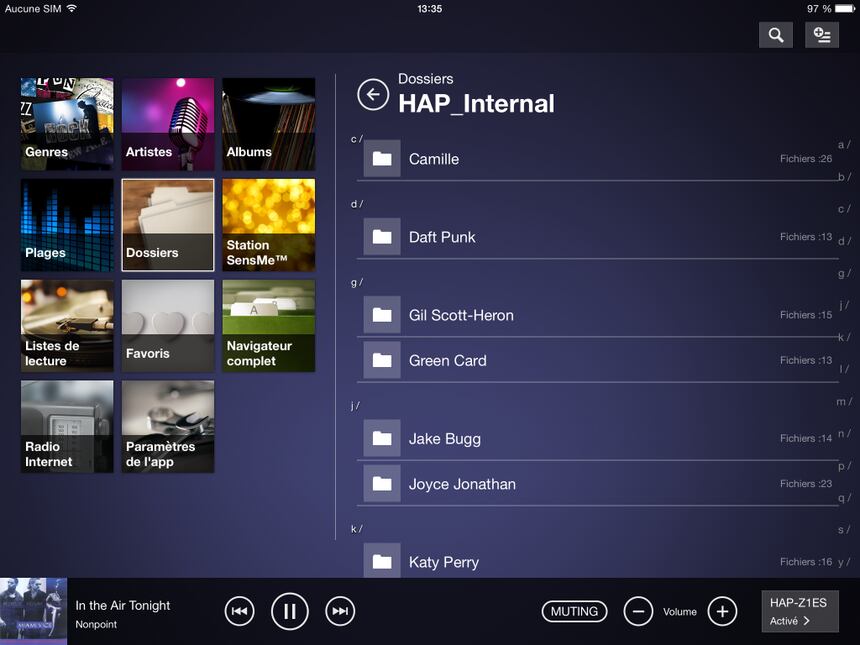
- The display of the album cover, its title, and a sample?

- Access to the settings
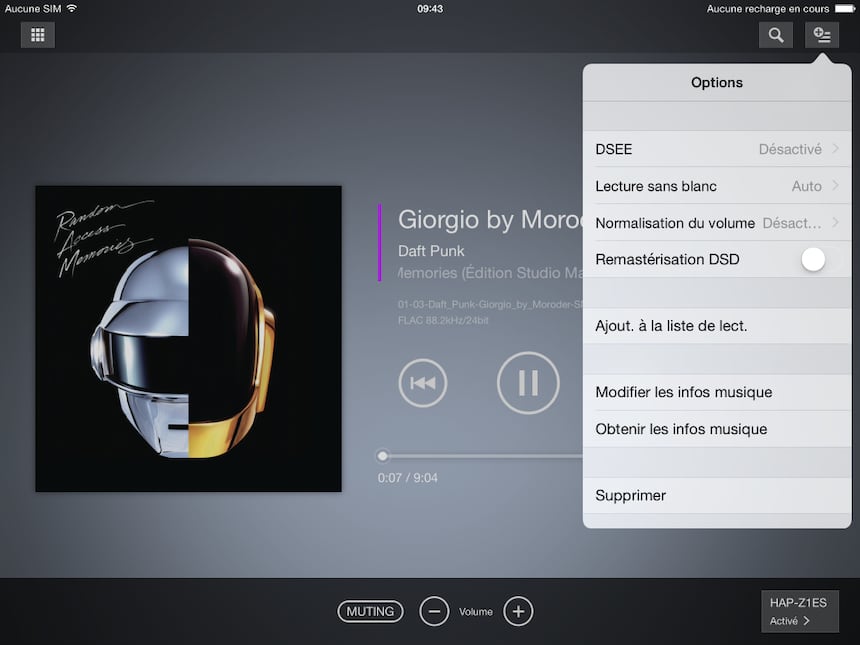
Seeing as we greatly admired of the sound reproduction of the UD-A1 and HAP-S1 models, it was likely that we would also approve of the HAP-Z1 audio player with hard drive.
Indeed, we very much admire the sound reproduction of the device. We listened to it via a DIY A-Class headphone amplifier without feedback, and connected it to the small DAC UDA-1 amplifier of the same brand (Sony), so that we would benefit from this transparent amplification.
The HAP-Z1ES device successfully proves itself to have a delicate and precise sound restitution, which does not leave any part of the recording in the background.
It is truly a delight to listen to the superb soundtrack from the film Miami Vice. It is not even necessary to increase the volume to hear the subtleties in the different tracks, or to be completely immersed in this mind blowing cocoon of sound of the Anthem of Moby. Superb.
When listening to Georgio by Moroder from the renowned album Random Access Memories by Daft Punk (in the Studio Masters version of 24 bit at 88.2kHZ), one does not miss a single demi quaver. This beautiful work of music clings to the soundscapes, whilst the listener is unwittingly bewitched by the voice of the singer.
A very beautiful moment of musical emotion also takes place when listening to Dixit Dominus, recorded in 24-bit/44.1kHz by Rinaldo Allessandrini and the Italiano Concerto. Sony?s device makes your heart glad, by analysing all the sounds and re-establishing the ventilation and dynamic of this fantastic version on early period instruments!
When listening to the title track Ave Cesaria, an extract from the album Racine Carrée, Stromae?s voice is excellently defined, being both precise and abundant at the same time. This creates an incredible presence, completely captivating the listener.
To conclude, with this Sony HAP-Z1ES audio player with hard drive, you discover the same fantastic results that you find with the two other Sony devices UD-A1 and HAP-S1. The sound restitution is incredibly delicate and meticulous, moving to the inflexions and purposes of the music. It is a high class device, which is easy to use and contains a fantastic monitoring application. Thus we present (all three!) with our Qobuzism award.
Reading Capacities
SONY HAP-Z1ES
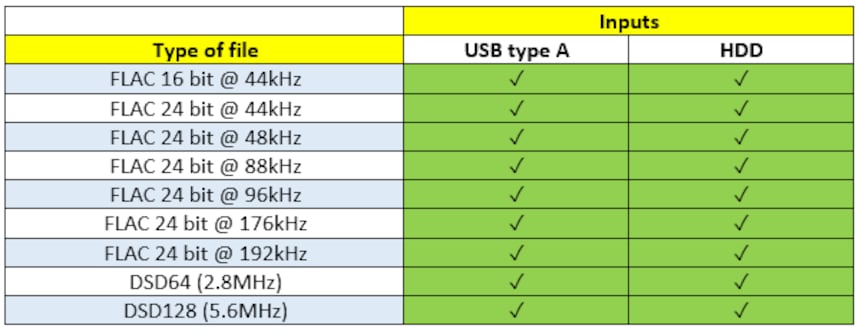
If you are a manufacturer, importer, distributor or actor in the domain of sound reproduction and you wish to contact us, please do so using the following address: newstech@qobuz.com
If you are passionate about our Hi-Fi Guide and you wish to contact us, please do so using the following address: rubriquehifi@qobuz.com



